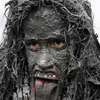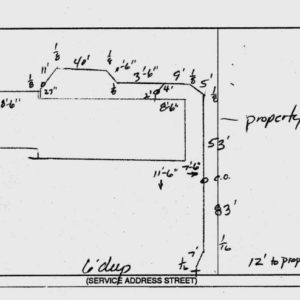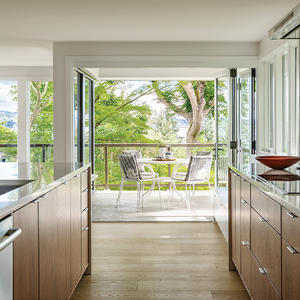We’re building a new garage in back of our house. The new access driveway will be following the same path as the city sewer (no other choice). The existing sewer runs almost dead center of proposed drive for about 150’. 38’ of the 150’ run is bordered by house on one side and property line on other. The driveway will run entire width from house to prop line at this point. Highest part of sewer line is about 30†below existing grade, which will be very close to finish grade. The line is ABS and there is a cleanout 100’ from the street
Initially my thoughts were to move the line nearer the house and then jog over into yard for the remainder of distance to road….thinking that if we ever needed access we wouldn’t have to tear up the drive, unless it was in the area adjacent the house. After thinking it over, I’m wondering if I’m not better off to leave it where it is, and pave over it the entire distance. The line has been in place for aprox. 12 years… works fine. Perhaps leaving a functioning sewer line outweighs the potential downside of what might come.
There will be some heavy truck traffic during construction and we may just get a motorhome someday, all of which make me wonder how those driveway loads transfer into ground, and potentially damage what lies beneath. If I were to move the line, 38’ of it (adjacent house) would be near the edge on the drive rather than the center…don’t know what the lesser of evils is.
The city requires the driveway be paved, but not sure if that will be slab or asphalt at this point. I’ve attached a scan of the existing sewer route drawing to shed some light on my gobbledygook text!
So… I’m looking for opinions….what would you do?
PJ
Whatever you can do or dream you can,
Begin it
Boldness has genius, power and magic in it. Goethe





















Replies
Here's an amateur thought. Can you sleave it? Say put it inside a larger diametor pipe, It can then be used for better protection.
Who Dares Wins.
If you ever need to replace the line, it's like that it can be done by trenchless methods, and they would not need to tear up the entire driveway, just a couple of spots to get access to it. Since it's ABS it's probably relatively new and in decent condition. You could have it scoped to see, but I wouldn't bother. You should be able to add and compact proper fill and then pave over the line without worrying about it getting crushed by the driveway--people do it all the time. Ideally you start from an open trench, but since it sounds like the line is already buried, how much do you know about the original trenching and filling that was done? Excavation and fill are based on local practice and you could talk to an excavator in your area to see what's typical.
Pave over it, the load is spread over a large area so either asphalt or concrete paving won't make any difference. If this was a septic system the compaction of soil and the unability to evaporate into the air, then you would have problems.
mike
Just a thought here based on what I've seen in other posts about this: Since this is Idaho, could freezing be a concern under a driveway that's likely to be cleared of snow during cold weather?
Al Mollitor, Sharon MA
" same path as the city sewer"
Did you really mean CITY sewer or your lateral to the city sewere truck?
If this is the city sewer than there is probably an easement that would affect your use of the area.
You're right, Bill. I am talking about the "lateral" and not the trunk. My bad nomenclature, I guess. No right-of-way issues. Given that, any suggestions?
I am going to talk to the sewer district engineer for his insight, but it's not really their jurisdiction because the line in question is on our property.PJ
Whatever you can do or dream you can,
Begin it
Boldness has genius, power and magic in it. Goethe
I have a client who just recently hooked into city sewer from septic.
Soon after the sewer line hook up paves right over the sucker, and it is right on the wheel track.
You should have clean outs, his was heavy cast iron, it wont crush even under enormous pressure as long as it is set on a solid base.
Eric
Trench it out.
Get some double-wall culvert pipe. 8 or 10 inch.
Lay the sewer pipe back in, in exactly the same way, only inside that culvert pipe.
It will NOT get crushed. And, if you ever need to replace it, it will be very easy to slip the old pipe out, and the new one in.
And it will not cost much.
It is nice to be able to do something like this before a drive goes in. Avoids disaster right now. And in time, when the line inevitably needs replaced, it will be soooo much easier...
Who cares, wins.
Just adding...
The cleanout can be left where it is.
Inside the same size culvert, going down and tee'ing with the horizontal. And a drive-over cover put above the cleanout.
You may want to make provisions where the vertical stack pipe for the cleanout, unscrews at the lower line, so that it will be as easy as that in the future, if the line needs replaced.
They make plastic/fiberglass covers for this sort of thing that can be driven over, but you may want to stick with an old fashioned iron cover.
Who cares, wins.
Peter,
I am an underground utility contractor (and sitework) in Indianapolis. I agree with davidmeiland, and disagree respectfully with luka. leave it as it is. It looks like you were originally on septic, and someone ran a municipal main through the area and forced homeowners to tie on?
In any case, you're fine. Pave over existing sanitary lateral. 12 years is long enough for any settling to have occurred, asphalt/concrete traps more heat than you'd expect making the 2 1/2 foot depth effectively much deeper (try lifting up a concrete slab or talking to someone who tears concrete out in the dead of winter), the load will be spread out by the slab if you're not going crazy on it - I would maybe watch it if you're trucking all the dirt off over the drive from your addition, route those around the other side of the house.
The point about a heavy duty cleanout cover is a good one. The t-wye on your lat will be a point of weakness. You should dig down to it and backfill if with sand, filling your trench with water to jet and compact the granular material. I say this because while it has settled over the past 12 years, material in the ground that is not specifically compacted usually will compact an additional 5% of its volume if it is structural (not topsoil), i.e. at a certain dryness it will be compactable to a 95% proctor value. Plus you will be disturbing soil in some fashion to put a clean out casting of some type on. So I would do this.
Supply yards catering to underground utility contractors are a good source of your casting. An east jordan 1755 or similar would be good for your application.
remodeler
Remodeler, you are precisely right on the septic to sewer conversion. That sounds like good advice on how to handle the cleanout. I'm assuming this East Jordan deal you mention straddles the lateral at trench bottom to shift load into soil on either side of lateral...correct? I'll Google it and see what I find.
No choice on where to access back of property...3 feet to neighbor's back yard on opposite side of house. I think we'll have a use for most, if not all, of the topsoil removed for foundation and slabs. The property drops about 14" from house to rear prop. line and I'd like to get it close to the level of the house. That will hopefully keep the other neighbor's irrigation from flooding our back yard....but that's another story!
Thanks to all for your responses. Ya gotta love this place and the colllective expertice found here.PJ
Whatever you can do or dream you can,
Begin it
Boldness has genius, power and magic in it. Goethe
Belay that assumtion on the East Jordan. After googling it I have a clearer picture of what you're proposing. One question...should the sand filled "shaft" I dig be approximately same diameter as the East Jordan? Kinda like the way that rolls off my tongue...East Jordan, East Jordan.....uh, where were we? Anyway, does it sound like I have a handle on it?PJ
Whatever you can do or dream you can,
Begin it
Boldness has genius, power and magic in it. Goethe
You know, I could be disagreed with all my life, and never get stressed about it, if it were always done this way.
Well said. You make a good point.
If it were me in this situation, and I intended to live there the rest of my life... While I totally agree with you, I would still do it my way. The end result is still going to work the same, and when, not if... the line needs replaced, it will not cost thousands of dollars and a weeks work to do it.
A bit of expense and trouble up front. When it is easiest, would be worth tons, later, when the line has trouble. (And me a bit older, and not able to do quite as much as I am able to now. LOL)
: )
Who cares, wins.